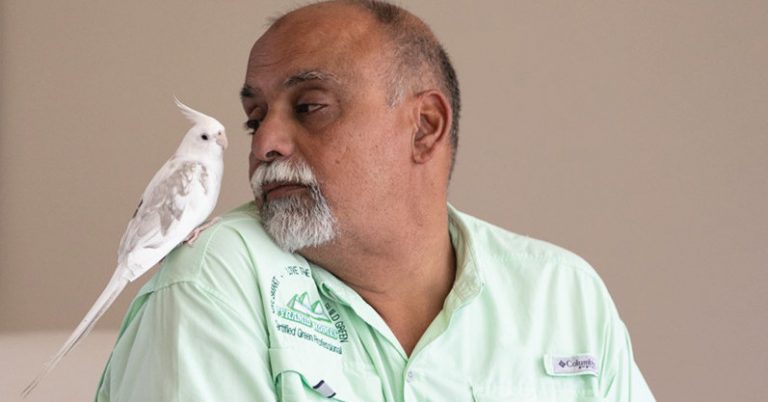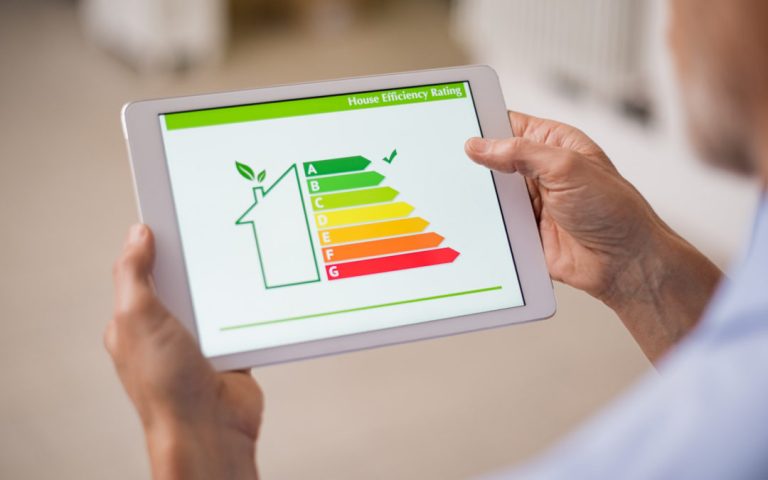TxAIRE Celebrates 5-Year Mark
The University of Texas at Tyler tasked a fledgling new entity on campus with a big vision—show people how to improve their lives through innovative research and exciting new technology. The Texas Allergy, Indoor Environment and Energy Institute (TxAIRE) did not disappoint. In five short years since TxAIRE was funded by the Governor’s Emerging Technology Fund, the UT Tyler-based institute has emerged as a leader in research and a partner for businesses and individuals looking to improve energy efficiency and environmental health. “Since that time, TxAIRE has sponsored 36 semesters of faculty research,” said TxAIRE executive director John J. Vasselli. “More than 55 graduate and undergraduate students have been involved in our research projects for greener technologies and healthier environments, representing more than 70 semesters of funded effort. “In addition, TxAIRE has brought in almost a million dollars of sponsored funding, primarily from the National Institutes of Health and the U.S. Department of Energy.” Eighty-four Texas-based companies have partnered with TxAIRE. “We have a lot of industry involvement with research, product development and evaluation to get the general public to embrace the technologies,” Vasselli said. In fact, proximity to industry was one of the reasons TxAIRE was located on the UT Tyler campus. In addition to being home to UT Tyler, the Tyler community houses an industry cluster for major heating, ventilation and air conditioning manufacturing facilities. It is also a location for respirator health research at The University of Texas Health Science Center at Tyler. UT Tyler itself is a big asset for the program and TxAIRE offers students an industry view they could not receive anywhere else. On campus, TxAIRE research involves all university engineering disciplines, construction management, environmental sciences and chemistry. “As a student the experience of the TxAIRE project has been incredible,” said Kevin Murray, UT Tyler senior in the construction management program. “When learning conceptual theory a student can only visualize the studied material. Being able to put that conceptual theory simultaneously into practice as I was learning it was most beneficial. It cemented the theory and allowed me to get experience while learning. That gives me an advantage over my contemporaries.” From studies that look at the impact of indoor air on children to developing batteries that you never have to replace, TxAIRE is on the cutting edge of health, energy and technology that impacts UT Tyler students, the campus and the community. “But the biggest projects so far are our research and demonstration houses on campus,” said Vasselli. “These houses are unique in the U.S., perhaps in the world.” During ribbon-cutting ceremonies for the two homes in 2011, UT Tyler President Rodney Mabry said, “These homes provide a look into the future where our indoor environments help to improve our quality of life, help save energy and water and yet are affordable. These homes bring new technologies and innovative thinking to East Texas and the
nation.”
The Houses That Innovation Built
At first glance, the two buildings near the west entrance of the UT Tyler campus do not look like they belong in a university setting. They have no lecture halls, no computer labs and no administrative offices. In fact, students won’t find these locations on their class schedules. But make no mistake. These homes are places of learning. The TxAIRE research homes – nicknamed the Tyler House and the Patriot House –demonstrate the latest technologies for energy efficiency and environmental health. The houses are both a testing ground and a showcase for people in the industry and for end-purchase consumers. “The TxAIRE homes are unique facilities for residential energy and indoor environmental quality research in hot and humid climates,” said Dr. Roy Crawford, TxAIRE research and technology director. “The level of interest that we have seen from the local building industry, manufacturers and homeowners has exceeded our expectations.” Some of the concepts put into action in the homes include:
- Solar energy for electricity, heating and lighting.
- Advanced framing techniques that use less lumber.
- High performance windows.
- Insulation advancements.
- High-efficiency cooling units.
- Geothermal wells.
Sensors installed in each house provide data on thermal performance, ventilation and indoor air quality, energy efficiency and humidity control. “We learned a lot during construction and will continue to learn more as our studies continue for the next several years,” said Crawford. “By monitoring the performance of different technologies, researchers will be able to determine what works and what doesn’t and which products are cost effective.” Working in the TxAIRE homes gave Murray practical experience to hit the ground running after he graduates this December. “It helped me understand construction techniques from concrete pours, roofing, HVAC, masonry and plumbing,” he said. “Instead of looking at a picture in a textbook, I was on-site participating in the construction.” Anwar Khalifa of Tyler, owner of Pyramid Homes and general contractor for the TxAIRE houses, worked side-by-side with TxAIRE staff and students in the construction. Building with more energy efficiency is always a good idea, said Khalifa. The research homes “answer questions about what people can do in their homes and give them options,” he said. The homes are a resource for the entire community. “We host open houses to share the technology with the community,” Vasselli said. “The houses are full of signage that explains new technologies and energy savings. We want to be seen as an objective third-party source of information about these energy savings.” He added, “We give tours to different groups who might benefit, like realtors, fire marshals, many companies looking to see how technology works in the homes. Every time a school group comes on campus, we are available to offer special tours by appointment.” For the Children The research homes are not the only projects TxAIRE has in the works. “We have also been working closely with the National Institutes of Health on a project that is part of the National Children’s Study,” Vasselli said. “The NCS is the largest study ever done in the country … It will track over 100,000 children from the time of a mother’s pregnancy through the age of 21 of the child.”
A Look Inside the Houses The Texas Allergy, Indoor Environment and Energy Institute offers industry leaders and consumers a glimpse of what it means to have more energy efficient and healthier homes. The homes, located at the west entrance of The University of Texas at Tyler campus, were built in cooperation with local businesses to demonstrate greener technology. House 1, nicknamed the Tyler House, shows how an existing home can be renovated for energy efficiency. This home consumes only half of the energy used by an average home. House 2, the Patriot House, was built using the latest, next-generation products for energy performance and health. Just some of the technology featured in one or both of the homes include:
- High reflectivity roofing shingles.
- Reflective barrier wraps.
- Geothermal ground-loop cooling system.
- Advanced framing.High performance windows.
- Air-source heat pumps.
- Energy storage.
- Hydronic distribution.
- Built tight with less air leakage than an average home.
- Solar photo-voltaic cells that convert sunlight to electricity.
- Solar thermal water heating.
- Solar light tubes.
The Ingenuity Center not only impacts students directly, but also helps teachers in STEM preparation through research, professional development, curriculum development and technical assistance.
Working closely with UT Health Science Center at Tyler, TxAIRE has collected settled dust and air samples from a large number of NCS participant dwellings in Texas and is analyzing them to estimate the types and levels of contaminants present in indoor environments. The focus of the current TxAIRE NCS project is the measurement of Phthalate gasses that come off plastics. “Exposure to such contaminants may cause health issues in small children and the unborn when pregnant women are similarly exposed. We completed the first phase of the project this summer,” said Vasselli. “Being the largest such study ever done, the results are being eagerly awaited by the child health community. The actual report should be completed this fall.” Batteries That Keep Going … and Going Another groundbreaking project of TxAIRE involves batteries that never need to be replaced. “We are working with the Department of Energy and UT Dallas in developing a whole new generation of battery technology,” said Vasselli. Conventional rechargeable batteries can only be recharged about 300 times, he said. “We are testing prototypes of batteries that can be recharged forever. Someday you may never have to replace a battery. This will have huge ramifications on renewable energy, storing sunlight in batteries.” This is a long-term project that will take many more years before it reaches the commercial market, Vasselli noted. Community Connection TxAIRE hopes to impact East Texas by injecting technology into existing companies and starting new companies. “The focus is really creating jobs and creating economic development,” Vasselli said. The program will continue to participate in critical research and product development with the goal of impacting people’s lives for the better. With so much accomplished in just five years … it is a good start. Fruitvale student Kayle gave the program an A-plus: “It is magnificent. No joke! It most definitely has helped me get better grades and have better behavior in all my classes.” Other Fruitvale students remarked:
- “I really enjoy the University Academy here. I love that every day we learn something new … and thinking outside of the box comes more easily now.” – MaKayla
- “Our program has taught me to be more responsible and learn to work with others as well as being able to count on myself when I need to.” – Bryli
- “I know now that school doesn’t have to be boring.” – Michelle
Everyone Wins Tyler and Fruitvale ISD students are not the only ones who benefit from the University Academies. More than 20 UT Tyler students from across all disciplines work in the after-school program. “With the grant, UT Tyler adds six full-time positions to the local economy, as well as around 20 half-time positions for students,” President Mabry said. The job allows UT Tyler students to work in their chosen fields while impacting lives. Chelsea Lammes, a UT Tyler graduate student in the field of counseling, teaches anger management and career exploration at Boulter. “I teach them skills to work through problems themselves,” she said. “How can you not be changed working with these kids? Each day when you leave, you see a change in them.” UT Tyler graduate student Alex Stansbury wants to work in the field of special education. “I got involved to make an impact in some way . . . to be an advocate for these kids,” said Stansbury, who works at Dogan after school. The student added, “I teach yoga and none of them knew what it was at first. Now they really enjoy it. I think the positive interaction with adults and attention is reinforcement for them.” Vickie Lacy is a third-year graduate student who works at Stewart. As a school counseling major, Lacy helps counsel students and teach fine arts. “The after-school program is so important,” she said. “They need mentors. As college students, when we pay attention to them, it gives them a real look at moving beyond where they are.” President Mabry said, “We plan to expand this program to be as beneficial as possible to as many possible. Efforts are already under way to include elements of the project in our education, psychology and counseling classes.” The free program also provides adult education classes for family members of participating students. In addition, the district provides snacks and transportation to students who participate in the full program.
- President’s Letter
- Around Campus
- Special Section: TxAIRE Celebrates 5-Year Mark
- Focus on Faculty: Dr. Gus Gordon Wins i2i Challenge
- Focus on Alumni: NBC Executive a Long Way From Tyler at ’30 Rock’
- Focus on Students: Exploring the World Through the Model UN Program
- Focus on Benefactors: The Joy of Giving Continues in the Riter Family
- Patriot Athletics: Season Highlights
- Alumni News
- Class Notes








